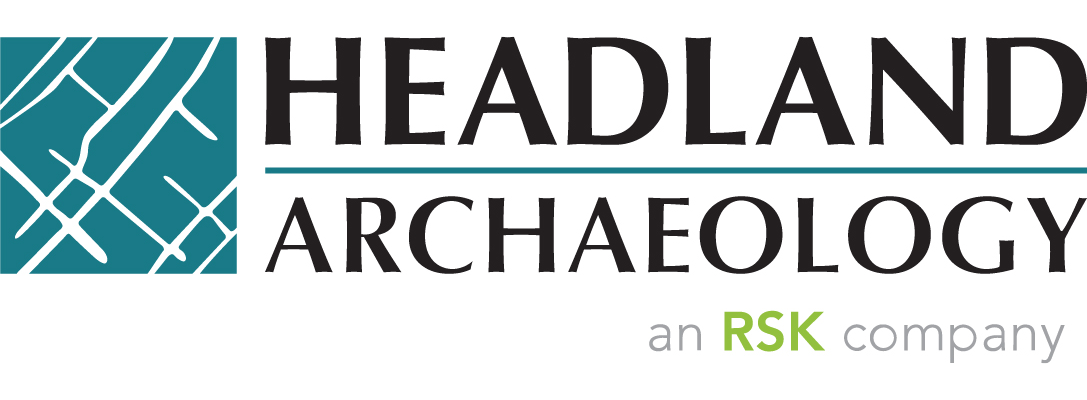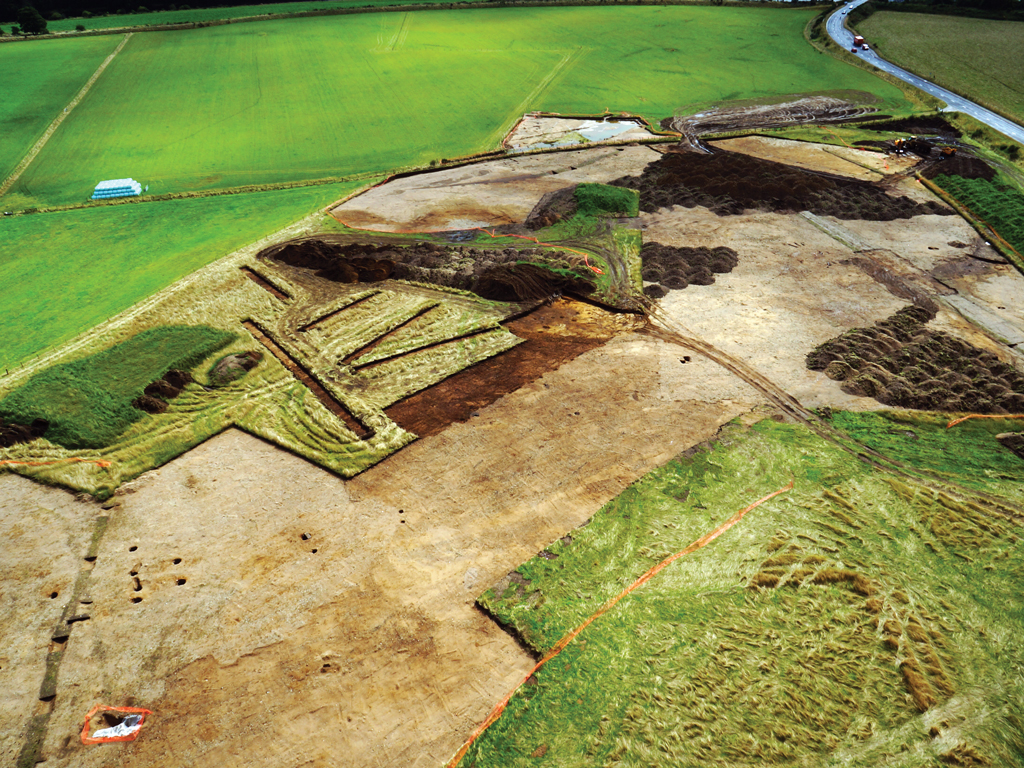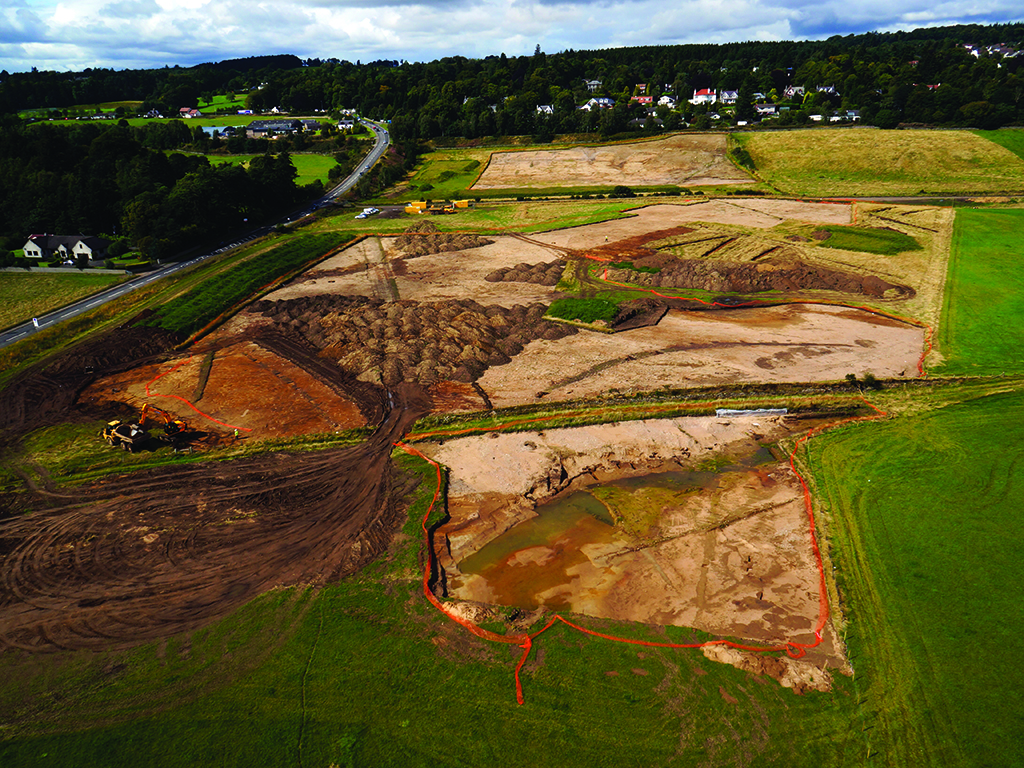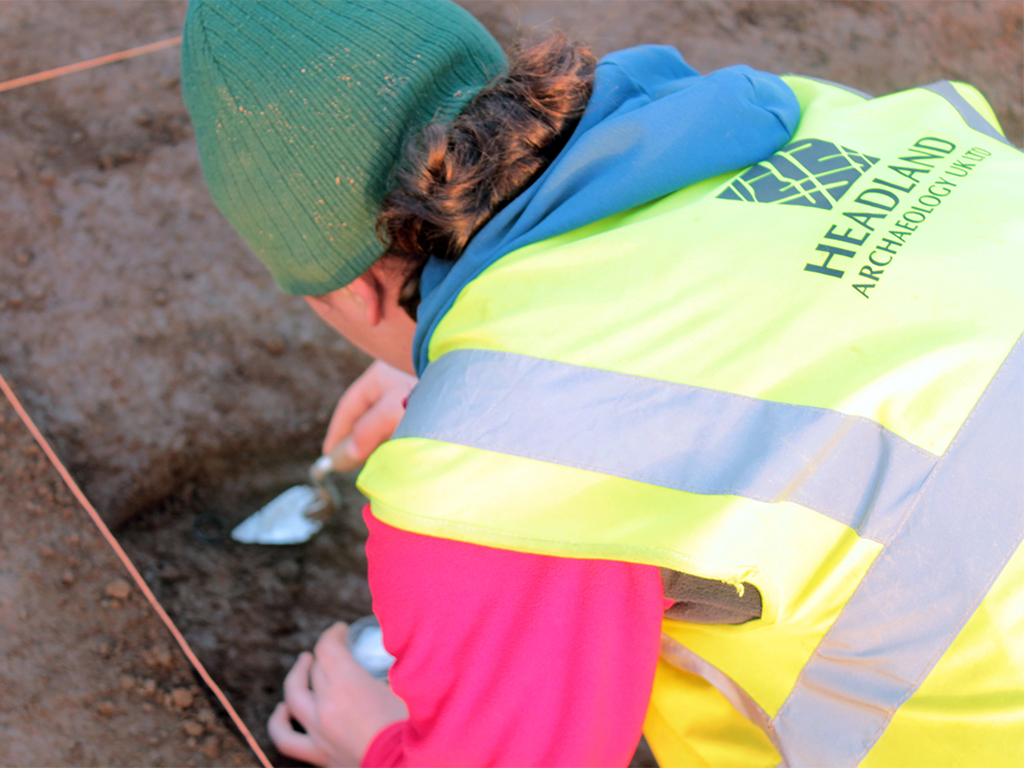Major infrastructure projects, needing extensive resources, excellent project management skills and a great team spirit, are at the core of Headland’s business. As Principal Contractor, there are additional logistical and Health and Safety challenges. Headland is well-equipped to deal with all of them.

Aberdeen Western Peripheral Route/Balmedie-Tipperty
About This Project
Project Summary
The Aberdeen Western Peripheral Route/Balmedie-Tipperty (AWPR/B-T) covers a length of 58 km bypassing Aberdeen City Centre and improving transport links across the north-east of Scotland. Our involvement began in 2012 when we won the contract to undertake the first phase of advance archaeological works, along with two associated schemes: the Third Don Crossing and the A96 Park and Choose Scheme.
Our involvement continued on the next phases of pre-construction and construction works. As Principal Contractor throughout the non-invasive and pre-construction stages, we took the lead on the management of a variety of operational issues. This included successfully agreeing access with over 100 landowners, programming the work around crops and livestock to minimise disturbance, securing permissions from statutory bodies and utilities, co-ordinating the work of sub-specialists on the scheme such as GI contractors and ecologists, and all traffic management. Key to the success of the project was working very closely with the client’s consultants, Jacobs, designing appropriate methodologies to the sites under investigation as well as securing trusted sub-contractors. Once the project had been passed on the construction team, we also provided a team of Archaeological Clerk of Works.
Following completion of mitigation works, we undertook the post-excavation programme, initially producing a series of assessment reports followed by an extensive range of specialist analyses and reporting, culminating in the production of two publications; an academic monograph and a popular synthesis.
Project Details
Pre-construction
The first stage of advance works was several non-invasive archaeological surveys along the road corridor. These involved different techniques aimed at establishing the potential for unknown archaeology, as well as recording the known upstanding archaeology. The main component was a 520ha geophysical survey supplemented by topographic surveys, historic building surveys, field-walking and environmental coring, all undertaken by our in-house specialists. During the same period, we also provided an ACoW to the Ground Investigation contractor (Soil Engineering).
The survey were followed by invasive archaeological works to verify the results and identify areas of archaeological risk. Headland undertook the investigation for two of the largest sections of the scheme. The work was carried out within a compressed 12-week period, and critically, all reporting was completed on time and budget, allowing the mitigation stage of the works to be designed by the consultants.
The final stage of pre-construction work involved targeted topsoil stripping at 45 locations, followed by mitigation excavation. This was designed to reduce the risk of unexpected archaeology during construction and successfully mitigated the impact of the scheme on the archaeological resource.
Construction
Headland provided a team of archaeologists to assist during the construction phase comprising a Principal ACoW with two support archaeologists, all of whom worked directly with the Environmental Section of the Joint Venture Design Team. They advised on the mitigation strategy needed to ensure best practice was followed and monitored the ground works within the identified areas of risk.
Post-excavation
The range and significance of the archaeological sites uncovered was considerable. To ensure that the highest quality of investigation and research, we worked with our in-house team of specialists, as well as consulting and commissioning external academic experts who provided key insights into our reports. We also needed to ensure the publications were appropriately illustrated. Rather than opt for a traditional approach to reconstructing the archaeology from each period, we drew on our graphics team’s expertise and creative flair, resulting in the production of artist’s impressions to give a real sense of the landscape setting of each site. All the while, we maintained our relationship with the consultant and client, providing them with regular updates on progress and the results of our work.
The result of several years of work was the production of two books in early 2019. ‘The Land was Forever: 15,000 years in North-East Scotland’, published by Oxbow Books provides a wealth of information which can be used by commercial and academic archaeologists alike in the future. ‘Highway through History’ is aimed at a more general reader and was distributed to hundreds of schools and libraries in the Aberdeenshire and Aberdeen City region. It is also available to download as free pdf here. From a contractual point of view, it contributes to the aims of providing public benefit, and encourages local residents to engage in regional heritage. This has been further enhanced by talks given to local societies over the course of the last two years, presenting the results of site works to interested parties.
Client
Transport Scotland and Aberdeen City Council
Consultant
Enabling Works: Jacobs UK; Construction Phase: AWPR Design Joint Venture: Atkins & Halcrow
Contract Value
c.£3.6 m to date
Sector
Infrastructure: Roads
Service(s)
Geophysics, Evaluation, Excavation, Archaeological Clerk of Works








